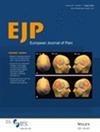Parents may seek out health information online when their adolescent has nonspecific back pain to better understand treatment options. Such information directed towards consumers has not been previously analysed.
A descriptive cross-sectional content analysis was performed to describe the treatments recommended on consumer websites for nonspecific back pain in adolescents. The credibility and readability of the websites were also assessed. Systematic Google searches were completed in five countries, and relevant content from eligible web pages was analysed. An a priori codebook with 34 treatment-related codes was developed. Nine additional codes were inductively created during analysis. Credibility was assessed using the JAMA benchmark. Readability was assessed via the Flesch Kincaid Grade Level.
Of 245 web pages, 48 were deemed eligible and analysed. Of 43 treatment codes, 37 were present in at least one web page. The five most frequently identified codes were See the doctor/get a diagnosis (found on 85% of web pages), Ergonomics/posture/biomechanics (52%), Reassurance (48%), Physiotherapy (48%) and Non-prescription pharmaceuticals/supplements (46%). Only 21% of the web pages met all four JAMA benchmark criteria, and 15% cited at least one recent or high-quality source. The median Flesch Kincaid Grade Level score was 9.0 (range 3.5–12.9).
Parents of adolescents with nonspecific back pain may find that treatment recommendations published online are numerous and varied, with visits to the doctor encouraged. The credibility scores of these web pages are generally low, while the median reading level may be too high for the general population.
This analysis reveals that public-facing websites with recommendations for treating adolescent nonspecific back pain do not cite the most recent, high-quality research. Although web pages correctly encourage physical activity and exercise over surgery and prescription medications, they do not reflect the psychologically informed or interdisciplinary care emphasized in recently published treatment recommendations. Clinicians must be aware that caregivers of their adolescent patients with nonspecific back pain may be exposed to online messages that encourage them to keep seeking a diagnosis.


